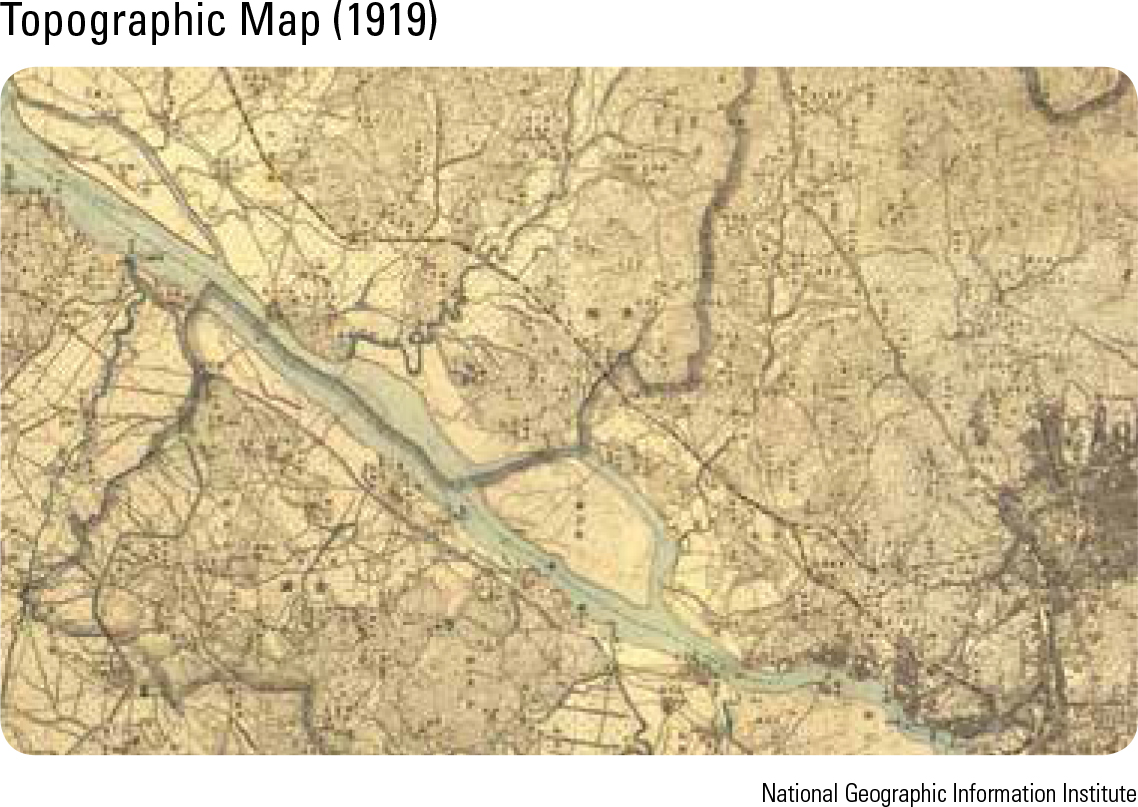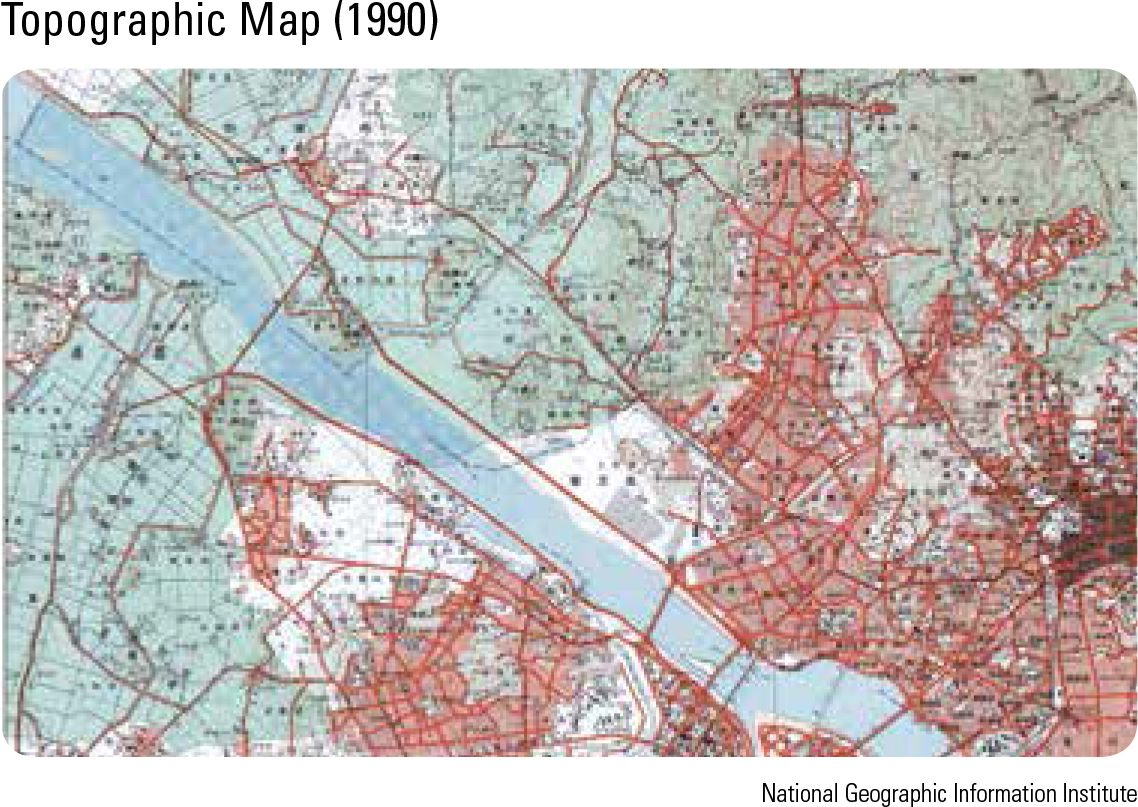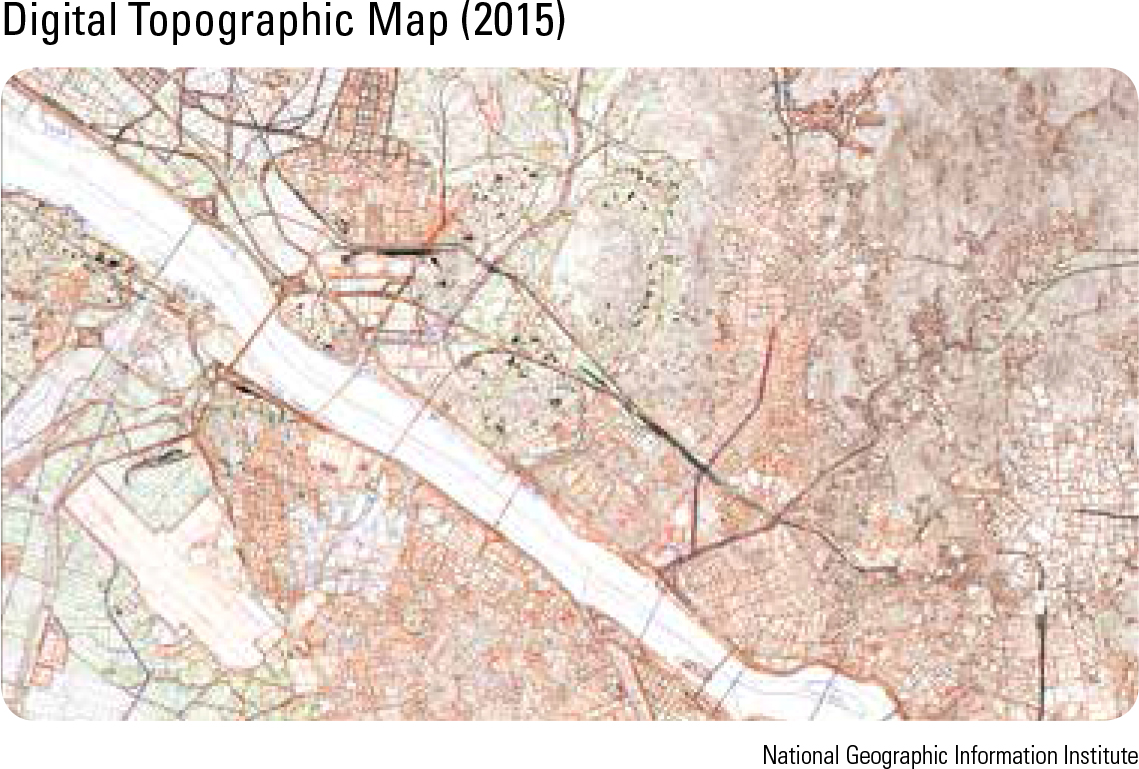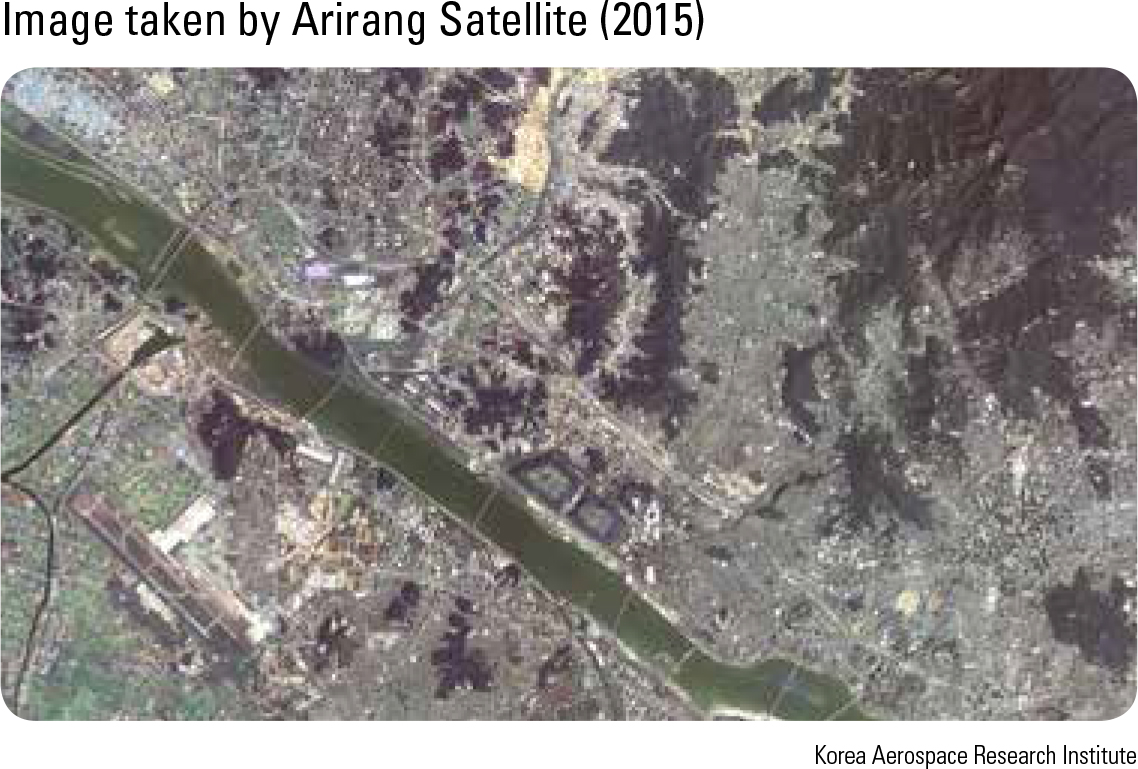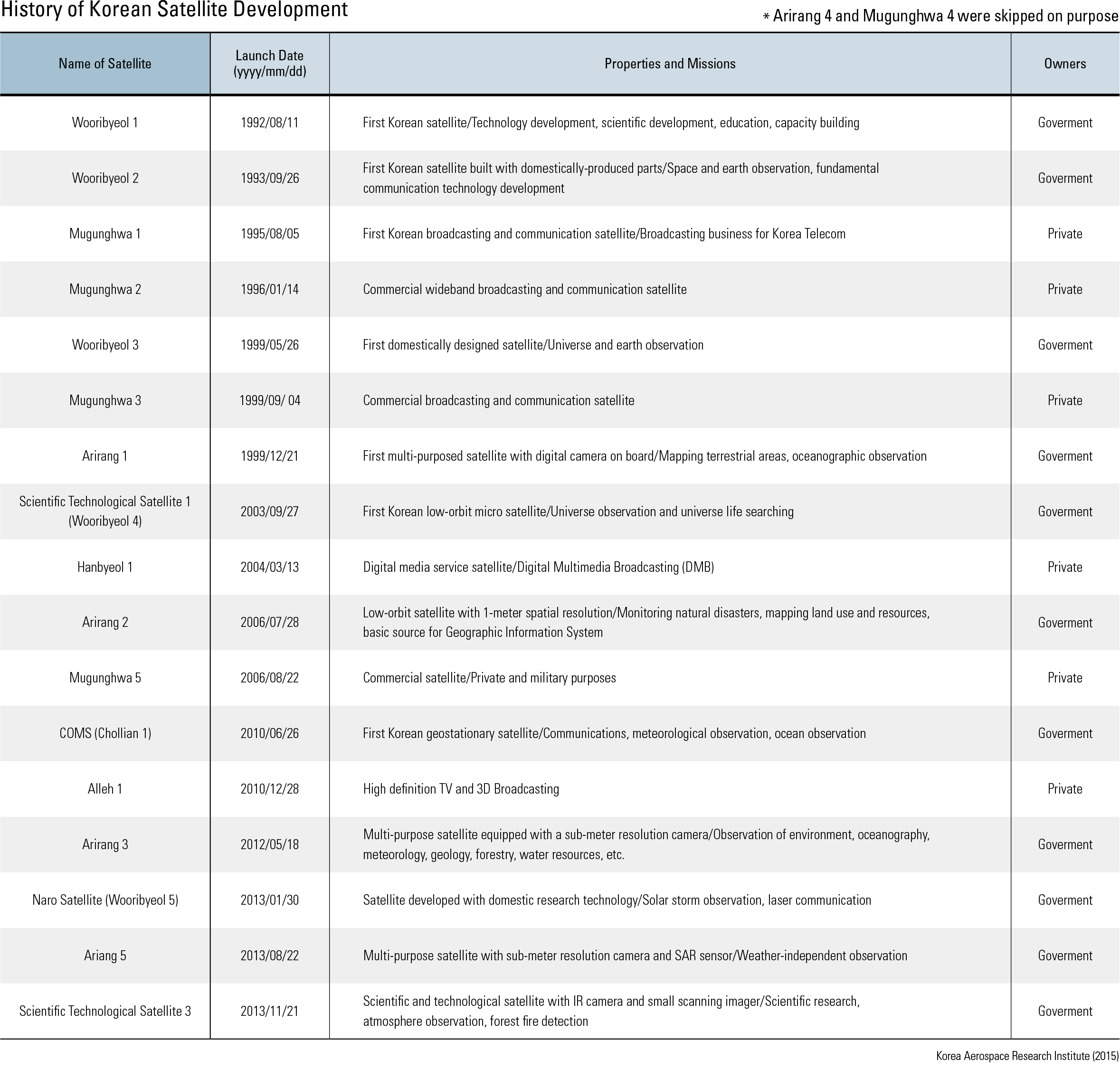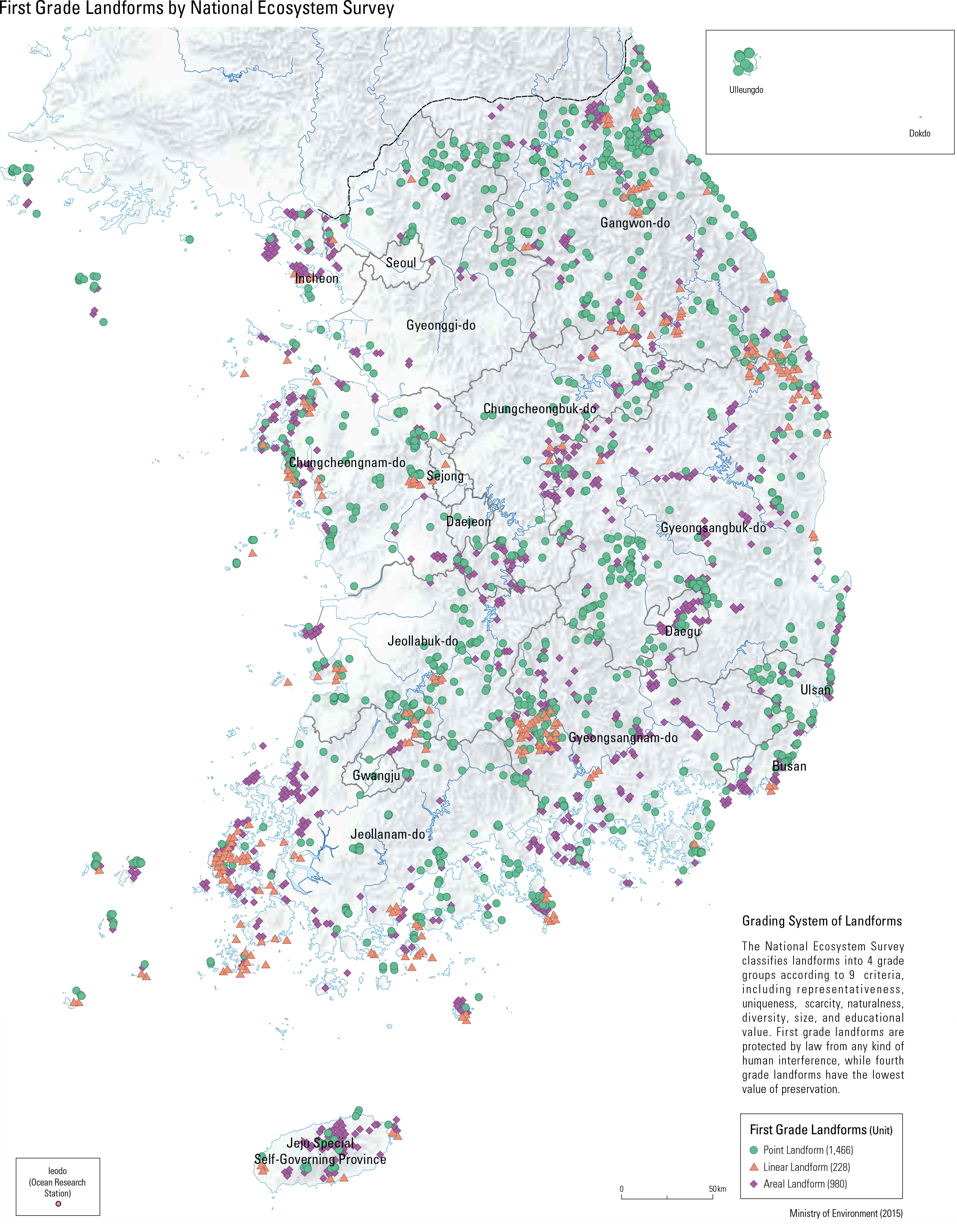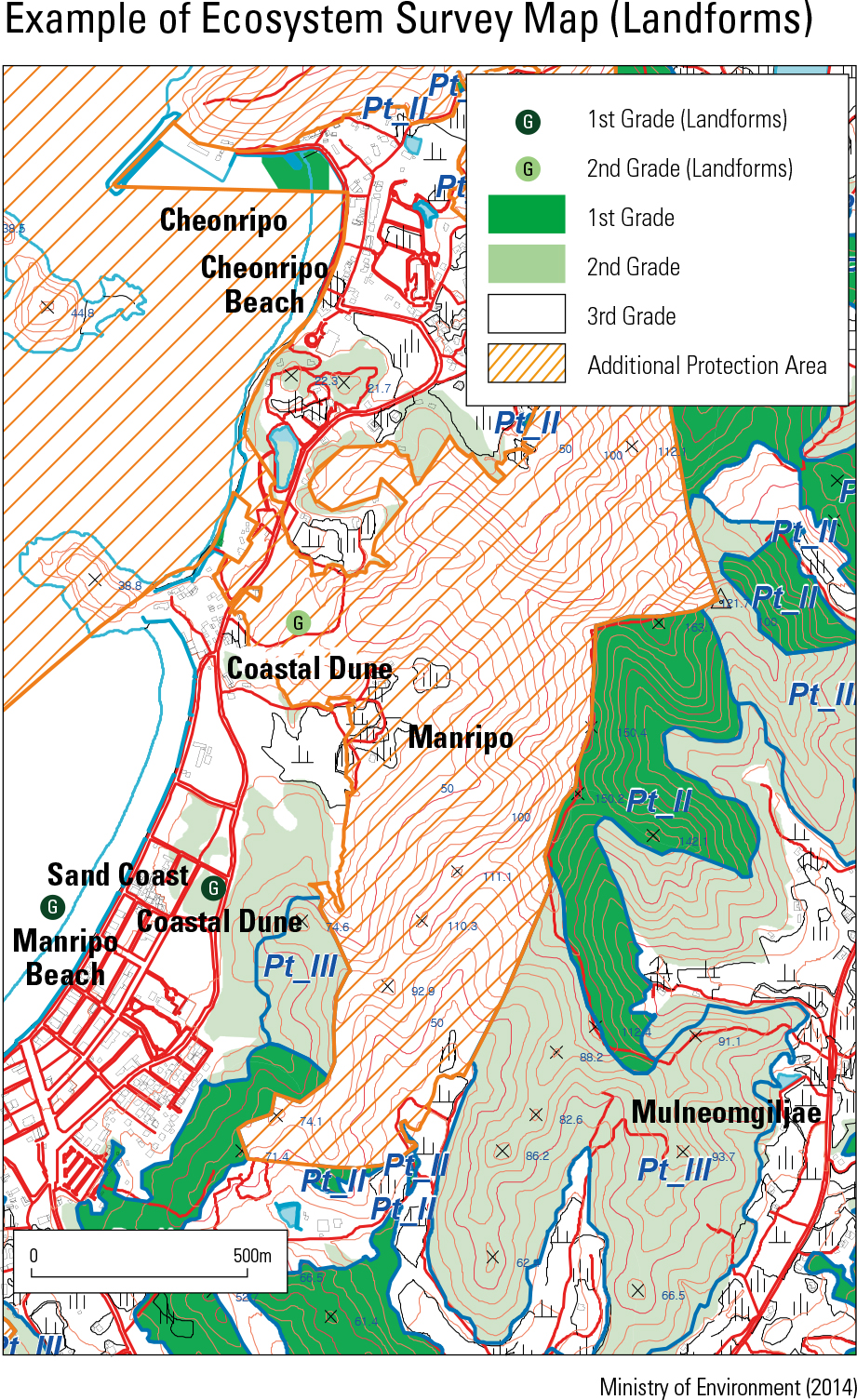English II
In late Joseon, modern topographic maps were introduced into the nation and coexisted with traditional maps. Modern mapmaking can be traced to the Korean Empire Period with the publication of Daehan jeondo in 1899. This map was the nation’s rst attempt to utilize latitude and longitude as its coordinate system. Efforts to make cadastral maps and topographic maps based on land surveys in 1909 were thwarted by the Japanese occupation. From 1914, the Japanese Governor-General of Korea made 722 1:50,000 scale topographic maps of the whole Korean territory and 143 1:25,000 scale topographic maps of major urban regions for land exploitation and military purposes. After the independence, the democratic Korean government was formally established in August 1948, and the surveying troops from the Korean Army Headquarters were in charge of mapping. In 1958, the Ministry of National Defense established the National Geographic Research Institute, the rst formal mapmaking govern- mental organization. From 1961 to 1963, the institute converted and revised 350 military topographic maps (1:50,000 scale) covering South Korea and made them available to the public. Experiencing fast economic growth and an increased demand for maps, the Korean government tried to develop a Cooperative Survey Program between Korea and the Netherlands to meet the request for precise topographic maps on a large scale. From 1967 to 1974, most parts of South Korea were mapped at a scale of 1:25,000 to produce 765 new maps. The National Geographic Information Institute was established under the Ministry of Construction in 1974, and have since consecutively produced 1:5,000 scale topographic maps and 1:250,000 scale thematic maps that include coastal base maps, land use maps, arti cial satellite imagery maps, and aerial photo maps. Automated map production was rst introduced in the mid-1980s. Using data from the National Geographic Information System (NGIS), digital topographic maps at scales of 1:1,000, 1:5,000, and 1:25,000 were being produced by the late 1990s. From 2001, the maps are continuously being updated and revised. By 2003, the sec- ond set of digital maps (topographic maps 2.0) was completed and the fully automated production process of maps at a scale of 1:5,000 fueled its commercialization. New mapping technologies are now being developed with the Mobile Mapping System (MMS), aerial photography, and construction drawings. Korea began its Space Development Plan at the end of the 1980s to promote cutting-edge technology. Based on the master plan for long-term national space industry development, various initiatives were launched in the 1990s, including the development of arti cial satellites. The rst arti cial satellite, KITSAT-1, was launched on August 11, 1992, successfully drawing public attention and support for the national space industry. Satellite imagery is utilized for a wide range of applications, such as monitoring potential natural disasters and analyzing resource use. Information collected from satellite images serves as basic data for geographic information sys- tems and ultimately contribute to balanced national development. Many fields have benefited from artificial satellites; broadcasting and communications services, marine observation, natural disaster prediction, and weather forecasting are just some of a continuously expanding range. Korea created its third long-term plan for national space devel- opment and expects to launch twenty more satellites. It is striving to further develop space technology and forge international part- nerships to take part in the space station project, and thus aims to become a front-runner in the global space industry within the next ten years.
page_2 |
